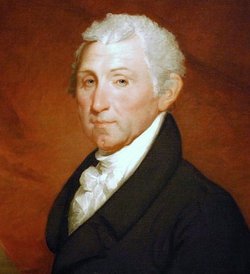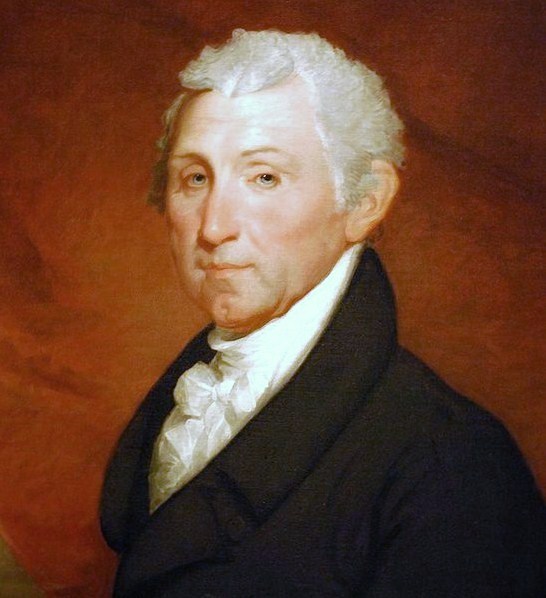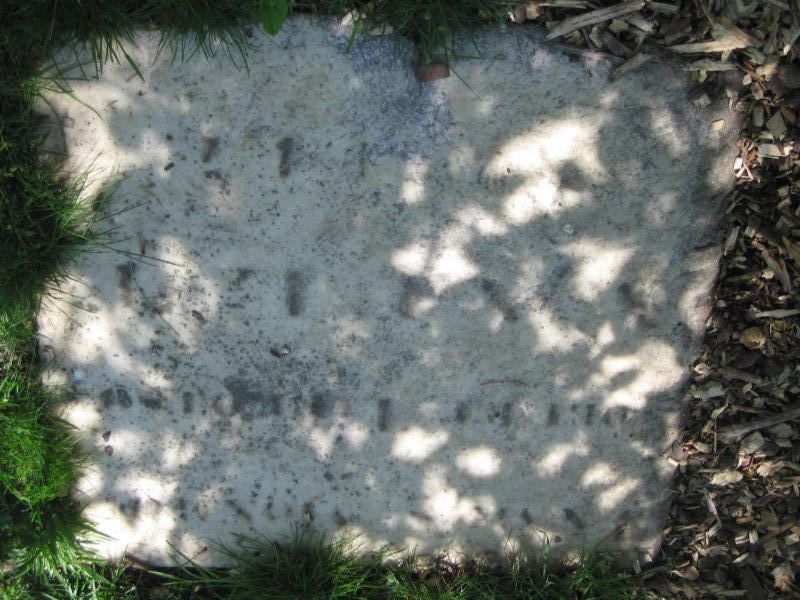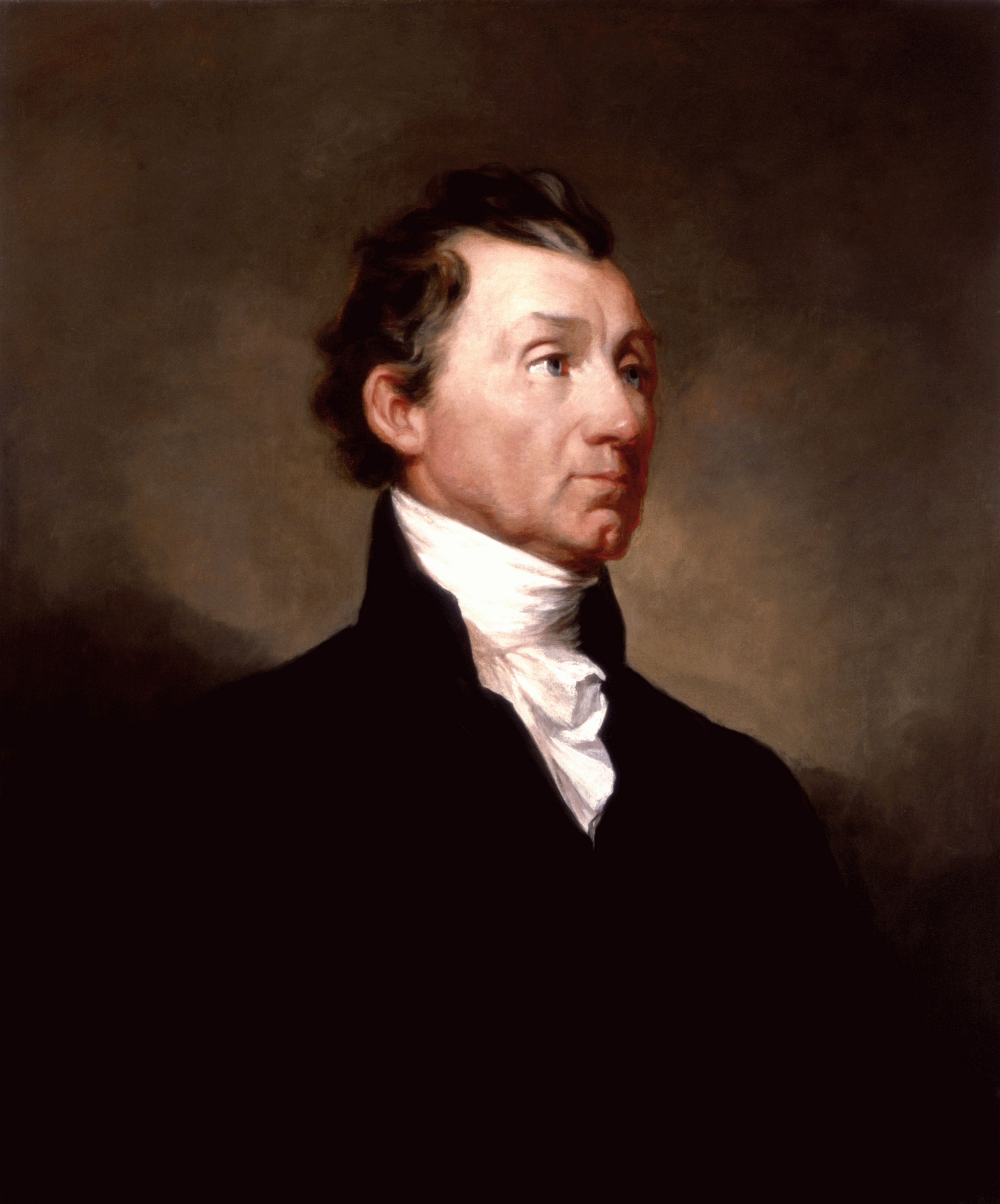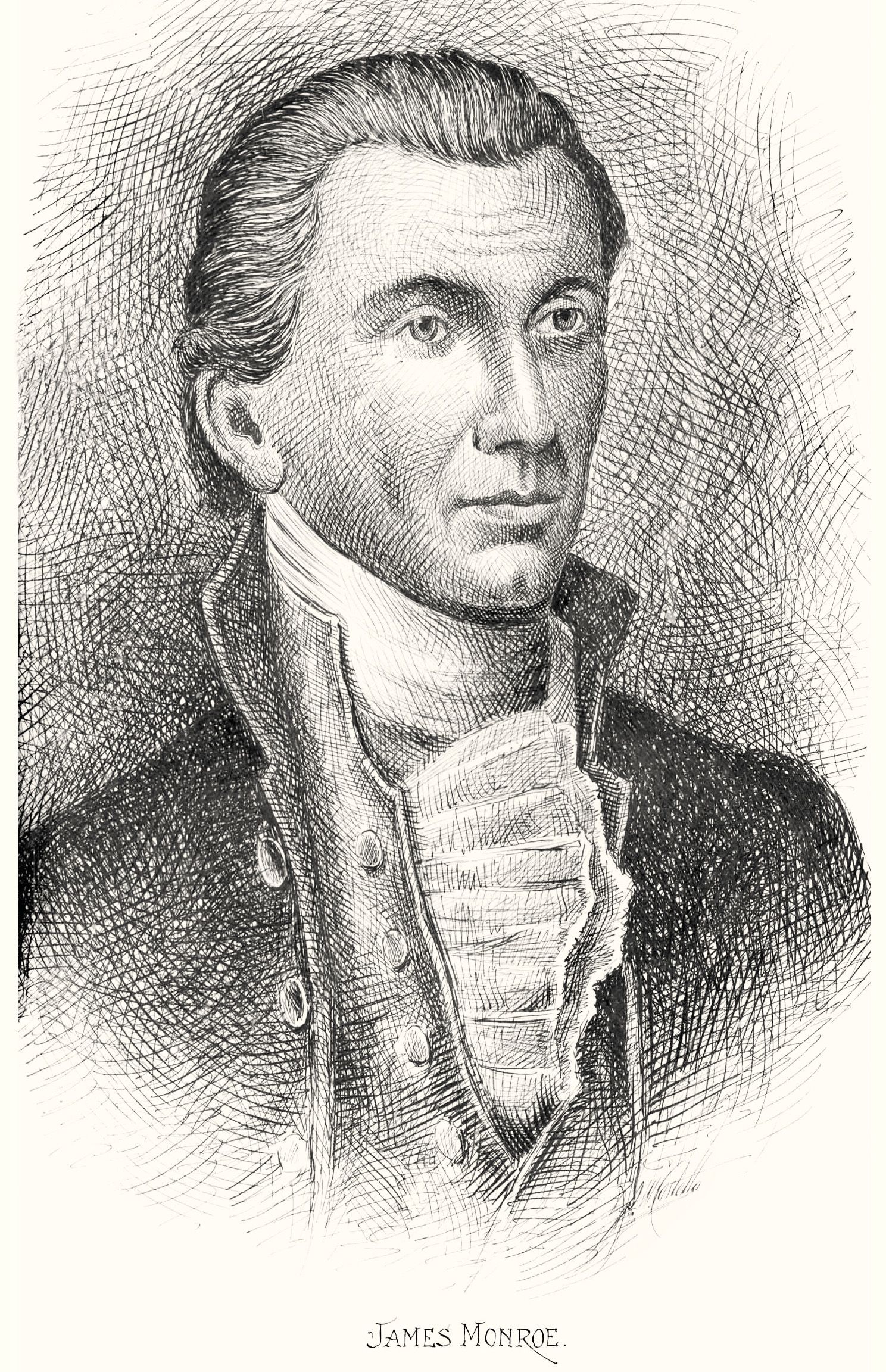Fifth United States President. James Monroe was born in Westmoreland County, Virginia, to parents not only wealthy, but rich in legacy with kinship to the Royal Family. He was tutored until age eleven, then educated at the finest school in Virginia, Campbelltown Academy, with the future Chief Justice John Marshall as a classmate. He attended the College of William and Mary, then studied law under Thomas Jefferson. He fought in the American Revolution. He was elected to the Virginia legislature, then became a member of Congress serving in the nation's Capital of New York City where he met Elizabeth Kortright, who was only seventeen when they married. Monroe served in the United States Senate and was appointed Secretary of State under President Madison. Elected to the Presidency, serving two terms, Monroe was uncontested for re-election to his second term. Some highlights of his Presidency: The Missouri Compromise admitted the state of Missouri as a "slave" state. Florida was acquired from Spain. The Monroe Doctrine, which opposed European colonialism in the Western Hemisphere, was adopted as a fundamental foreign policy. It held that any intervention in the political affairs of the Americas by foreign powers was a potentially hostile act against the United States. Upon assuming the Presidency, the couple lived at the nearby Octagon House because the White House was in ruins after the British burning in 1814 during the War of 1812. In order to refurbish the mansion and because of a need for money, they sold their own furnishings to the government. Upon leaving the White House, the couple planned to retire to Ash Lawn-Highland, a farm Monroe had purchased from his friend, Thomas Jefferson. Unfortunately, pressing debts combined with Mrs. Monroe's poor health, forced the President to sell Ash Lawn-Highland and retire to his lesser plantation of Oak Hill. His wife died and was interred in a vault on that estate. His health and finances declined further and he was eventually forced to spent his remaining time at the home of his daughter in New York City, where he died peacefully from heart failure on July 4, 1831, the 55th anniversary of the Declaration of Independence. Thousands of mourners followed his body up Broadway to the Gouverneur family vault in Marble Cemetery, while the church bells tolled and guns fired from the New York Battery. His death triggered a nightmarish journey of his body back to his native Virginia. A petition by the state of Virginia to return his body resulted in exhumation, with the casket being placed on a barge located on the East River, from where it set sail for Richmond. After surviving a harrowing journey beset by storms, the barge arrived along the James River for unloading. An accident occurred, killing the son of Alexander Hamilton (whom Monroe had nearly pistol-dueled over a disagreement years before). Interment finally proceeded in Hollywood Cemetery. James Monroe's legacy remains today at many preserved sites: His actual birth site is located on a 70-acre site in Colonial Beach, Virginia, and is owned by Westmoreland County. There is a marker located by the road. The birth house was dismantled years before, but an outline of the house remains. Ash Lawn-Highland, which was the home of the couple until they were compelled to sell for financial reasons, is in Charlottesville, Virginia. It is preserved and owned by Monroe's alma mater, the College of William and Mary. Oak Hill, where the Monroe Doctrine was drafted, where the couple lived in retirement, and where his wife and daughter died and were buried, is located at Aldie, Virginia. Lafayette visited that mansion on his tour of America. It remains in private hands. The Monroe Museum in Fredericksburg, Virginia, contains many artifacts from the President as well as thousands of documents, manuscripts, images, journals, and drawings. When James Monroe was reinterred in Hollywood Cemetery, its prestige was established. In the grounds outside the monument are buried his wife, his daughter, and her husband. They were moved from Oak Hill years after the death of President Monroe.
View final resting place and family links here.
View original burial location here.
Fifth United States President. James Monroe was born in Westmoreland County, Virginia, to parents not only wealthy, but rich in legacy with kinship to the Royal Family. He was tutored until age eleven, then educated at the finest school in Virginia, Campbelltown Academy, with the future Chief Justice John Marshall as a classmate. He attended the College of William and Mary, then studied law under Thomas Jefferson. He fought in the American Revolution. He was elected to the Virginia legislature, then became a member of Congress serving in the nation's Capital of New York City where he met Elizabeth Kortright, who was only seventeen when they married. Monroe served in the United States Senate and was appointed Secretary of State under President Madison. Elected to the Presidency, serving two terms, Monroe was uncontested for re-election to his second term. Some highlights of his Presidency: The Missouri Compromise admitted the state of Missouri as a "slave" state. Florida was acquired from Spain. The Monroe Doctrine, which opposed European colonialism in the Western Hemisphere, was adopted as a fundamental foreign policy. It held that any intervention in the political affairs of the Americas by foreign powers was a potentially hostile act against the United States. Upon assuming the Presidency, the couple lived at the nearby Octagon House because the White House was in ruins after the British burning in 1814 during the War of 1812. In order to refurbish the mansion and because of a need for money, they sold their own furnishings to the government. Upon leaving the White House, the couple planned to retire to Ash Lawn-Highland, a farm Monroe had purchased from his friend, Thomas Jefferson. Unfortunately, pressing debts combined with Mrs. Monroe's poor health, forced the President to sell Ash Lawn-Highland and retire to his lesser plantation of Oak Hill. His wife died and was interred in a vault on that estate. His health and finances declined further and he was eventually forced to spent his remaining time at the home of his daughter in New York City, where he died peacefully from heart failure on July 4, 1831, the 55th anniversary of the Declaration of Independence. Thousands of mourners followed his body up Broadway to the Gouverneur family vault in Marble Cemetery, while the church bells tolled and guns fired from the New York Battery. His death triggered a nightmarish journey of his body back to his native Virginia. A petition by the state of Virginia to return his body resulted in exhumation, with the casket being placed on a barge located on the East River, from where it set sail for Richmond. After surviving a harrowing journey beset by storms, the barge arrived along the James River for unloading. An accident occurred, killing the son of Alexander Hamilton (whom Monroe had nearly pistol-dueled over a disagreement years before). Interment finally proceeded in Hollywood Cemetery. James Monroe's legacy remains today at many preserved sites: His actual birth site is located on a 70-acre site in Colonial Beach, Virginia, and is owned by Westmoreland County. There is a marker located by the road. The birth house was dismantled years before, but an outline of the house remains. Ash Lawn-Highland, which was the home of the couple until they were compelled to sell for financial reasons, is in Charlottesville, Virginia. It is preserved and owned by Monroe's alma mater, the College of William and Mary. Oak Hill, where the Monroe Doctrine was drafted, where the couple lived in retirement, and where his wife and daughter died and were buried, is located at Aldie, Virginia. Lafayette visited that mansion on his tour of America. It remains in private hands. The Monroe Museum in Fredericksburg, Virginia, contains many artifacts from the President as well as thousands of documents, manuscripts, images, journals, and drawings. When James Monroe was reinterred in Hollywood Cemetery, its prestige was established. In the grounds outside the monument are buried his wife, his daughter, and her husband. They were moved from Oak Hill years after the death of President Monroe.
View final resting place and family links here.
View original burial location here.
Bio by: Donald Greyfield
Advertisement
See more Monroe memorials in:
Records on Ancestry
Sponsored by Ancestry
Advertisement
